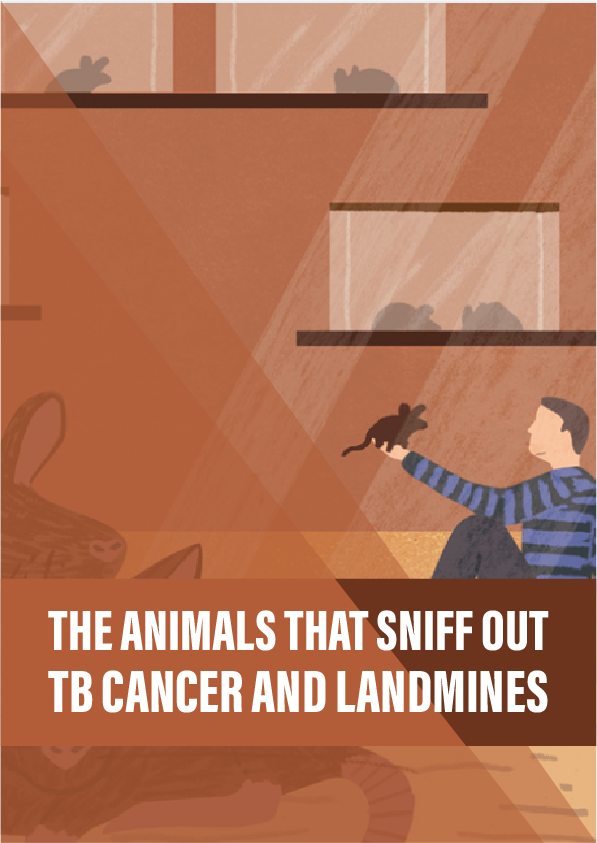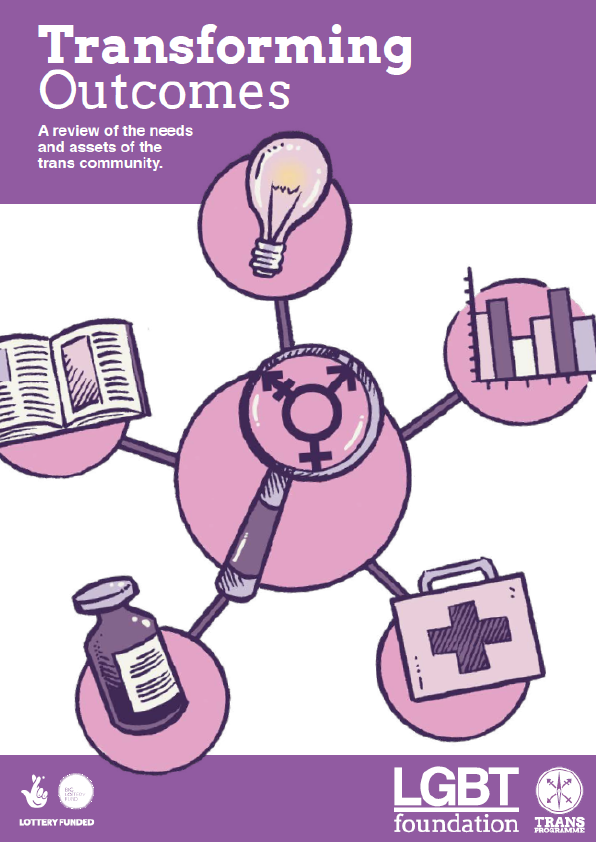Rats can smell tuberculosis. Dogs can smell cancer. Now they’re being trained to save your life. Emma Young reports.
n a small, hot room in a compound located in Tanzania’s lush southern highlands are three white-clad technicians, a glass-and-metal chamber and a large brown rat named Charles.
After being gently dropped into the chamber, Charles aims his long snout towards the first of a series of ten sliding metal plates in the chamber’s base. A technician swiftly opens it, revealing a small hole. Charles sniffs at it… and moves on. The hole is re-closed, and there’s a clink of metal as the next plate is yanked back. This time, Charles is gripped. He sniffs hard, scratching at the metal, the five claws on each paw splayed with the pressure. The technician calls out “Two!”
Over by the window, her colleague is holding a chart, which he keeps raised so the others cannot see it. He inserts a tick. I glance over. The chart is a grid of small boxes, ten across by ten down, each marked with an alphanumeric code. Two of the boxes in each line are shaded grey. The tick has been placed in one that is white. It’s highly possible that Charles has just saved someone’s life.
Charles is an African giant pouched rat, a species endemic to sub-Saharan Africa. He’s also a pioneer, one of 30 of his species that live and work here in Morogoro, a few hundred kilometres west of Tanzania’s largest city, Dar es Salaam, on a programme to sniff out tuberculosis (TB).
TB is a disease that can destroy the lungs. About 9 million new cases are diagnosed worldwide every year, one-quarter of them in Africa. Africa also has the highest TB death rate per head of population. Antibiotics can cure TB, but it’s fatal if untreated, and many patients are never diagnosed. This is partly because the 125-year-old microscope-based test used across Tanzania (and in many other cash-strapped countries) picks up only about 60 per cent of cases, a figure that drops as low as 20 per cent for people also infected with HIV.
This is where Charles the rat comes in. Charles and his rat colleagues sniff cough-and-spit samples provided by suspected TB patients. The rats aren’t infallible, but they do detect about 70 per cent of cases, and it doesn’t matter to them if a patient has HIV – which matters a great deal in Tanzania, where about four in every ten people with TB are HIV positive.
This particular morning Charles has sniffed 100 samples, missing one that has been identified as positive by the public clinic – shaded grey on the chart – but identifying 12 new suspected cases, which will now go for secondary checking.
Reference:
- A 2015 paper evaluating the use of African giant pouched rats for TB detection.
- The first Lancet letter, written by Hywel Williams and Andres Pembroke in 1989.
- The second Lancet letter, written by John Church and Hywel Williams in 2001.
- The Medical Detection Dogs website.
- Information on Apopo’s Morogoro research centre.
- Apopo’s rat videos.
- Emma Young’s previous report on US dogs sniffing out ovarian cancer.











